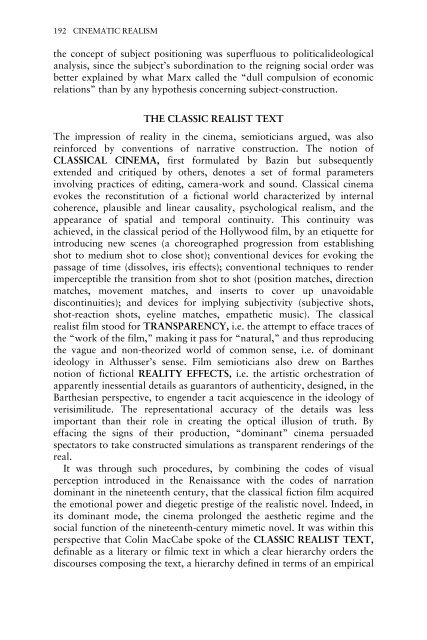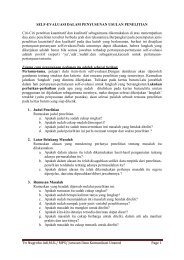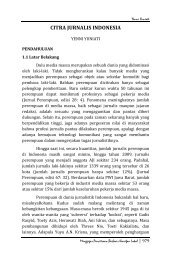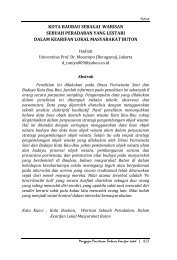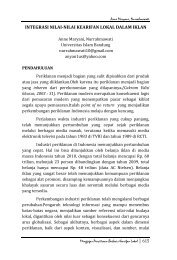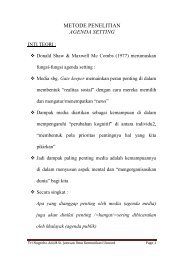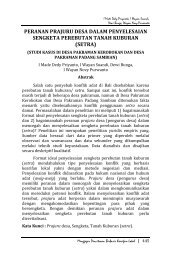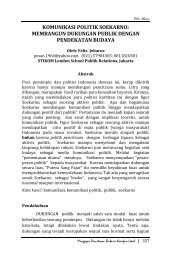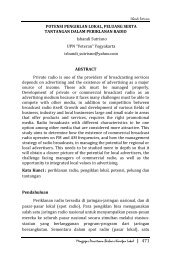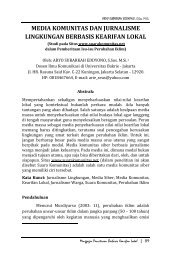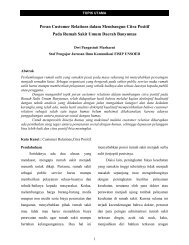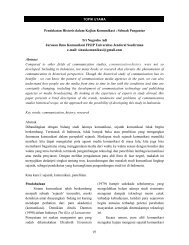New Vocabularies in Film Semiotics
New Vocabularies in Film Semiotics
New Vocabularies in Film Semiotics
You also want an ePaper? Increase the reach of your titles
YUMPU automatically turns print PDFs into web optimized ePapers that Google loves.
192 CINEMATIC REALISM<br />
the concept of subject position<strong>in</strong>g was superfluous to politicalideological<br />
analysis, s<strong>in</strong>ce the subject’s subord<strong>in</strong>ation to the reign<strong>in</strong>g social order was<br />
better expla<strong>in</strong>ed by what Marx called the “dull compulsion of economic<br />
relations” than by any hypothesis concern<strong>in</strong>g subject-construction.<br />
THE CLASSIC REALIST TEXT<br />
The impression of reality <strong>in</strong> the c<strong>in</strong>ema, semioticians argued, was also<br />
re<strong>in</strong>forced by conventions of narrative construction. The notion of<br />
CLASSICAL CINEMA, first formulated by Baz<strong>in</strong> but subsequently<br />
extended and critiqued by others, denotes a set of formal parameters<br />
<strong>in</strong>volv<strong>in</strong>g practices of edit<strong>in</strong>g, camera-work and sound. Classical c<strong>in</strong>ema<br />
evokes the reconstitution of a fictional world characterized by <strong>in</strong>ternal<br />
coherence, plausible and l<strong>in</strong>ear causality, psychological realism, and the<br />
appearance of spatial and temporal cont<strong>in</strong>uity. This cont<strong>in</strong>uity was<br />
achieved, <strong>in</strong> the classical period of the Hollywood film, by an etiquette for<br />
<strong>in</strong>troduc<strong>in</strong>g new scenes (a choreographed progression from establish<strong>in</strong>g<br />
shot to medium shot to close shot); conventional devices for evok<strong>in</strong>g the<br />
passage of time (dissolves, iris effects); conventional techniques to render<br />
imperceptible the transition from shot to shot (position matches, direction<br />
matches, movement matches, and <strong>in</strong>serts to cover up unavoidable<br />
discont<strong>in</strong>uities); and devices for imply<strong>in</strong>g subjectivity (subjective shots,<br />
shot-reaction shots, eyel<strong>in</strong>e matches, empathetic music). The classical<br />
realist film stood for TRANSPARENCY, i.e. the attempt to efface traces of<br />
the “work of the film,” mak<strong>in</strong>g it pass for “natural,” and thus reproduc<strong>in</strong>g<br />
the vague and non-theorized world of common sense, i.e. of dom<strong>in</strong>ant<br />
ideology <strong>in</strong> Althusser’s sense. <strong>Film</strong> semioticians also drew on Barthes<br />
notion of fictional REALITY EFFECTS, i.e. the artistic orchestration of<br />
apparently <strong>in</strong>essential details as guarantors of authenticity, designed, <strong>in</strong> the<br />
Barthesian perspective, to engender a tacit acquiescence <strong>in</strong> the ideology of<br />
verisimilitude. The representational accuracy of the details was less<br />
important than their role <strong>in</strong> creat<strong>in</strong>g the optical illusion of truth. By<br />
effac<strong>in</strong>g the signs of their production, “dom<strong>in</strong>ant” c<strong>in</strong>ema persuaded<br />
spectators to take constructed simulations as transparent render<strong>in</strong>gs of the<br />
real.<br />
It was through such procedures, by comb<strong>in</strong><strong>in</strong>g the codes of visual<br />
perception <strong>in</strong>troduced <strong>in</strong> the Renaissance with the codes of narration<br />
dom<strong>in</strong>ant <strong>in</strong> the n<strong>in</strong>eteenth century, that the classical fiction film acquired<br />
the emotional power and diegetic prestige of the realistic novel. Indeed, <strong>in</strong><br />
its dom<strong>in</strong>ant mode, the c<strong>in</strong>ema prolonged the aesthetic regime and the<br />
social function of the n<strong>in</strong>eteenth-century mimetic novel. It was with<strong>in</strong> this<br />
perspective that Col<strong>in</strong> MacCabe spoke of the CLASSIC REALIST TEXT,<br />
def<strong>in</strong>able as a literary or filmic text <strong>in</strong> which a clear hierarchy orders the<br />
discourses compos<strong>in</strong>g the text, a hierarchy def<strong>in</strong>ed <strong>in</strong> terms of an empirical


